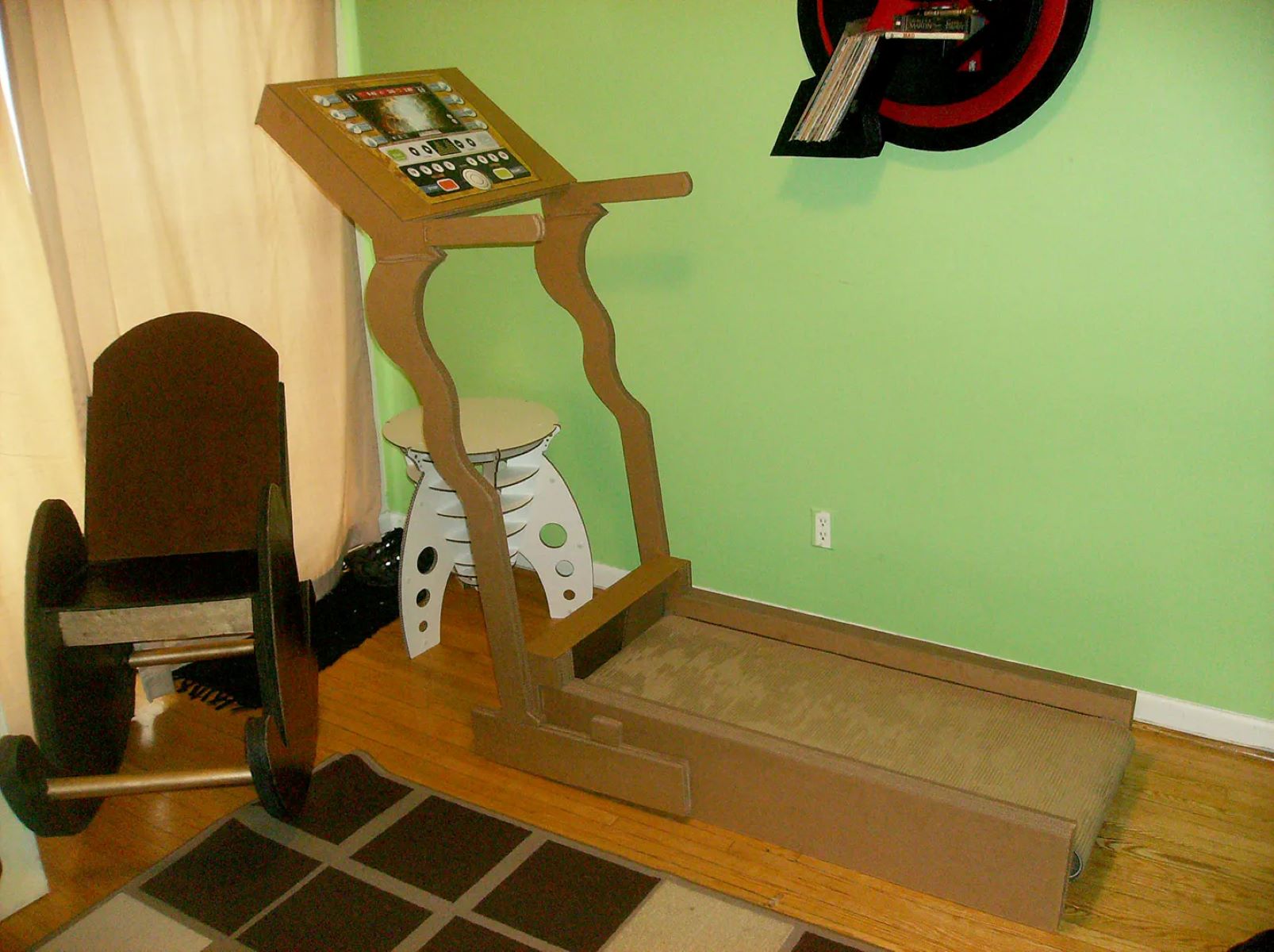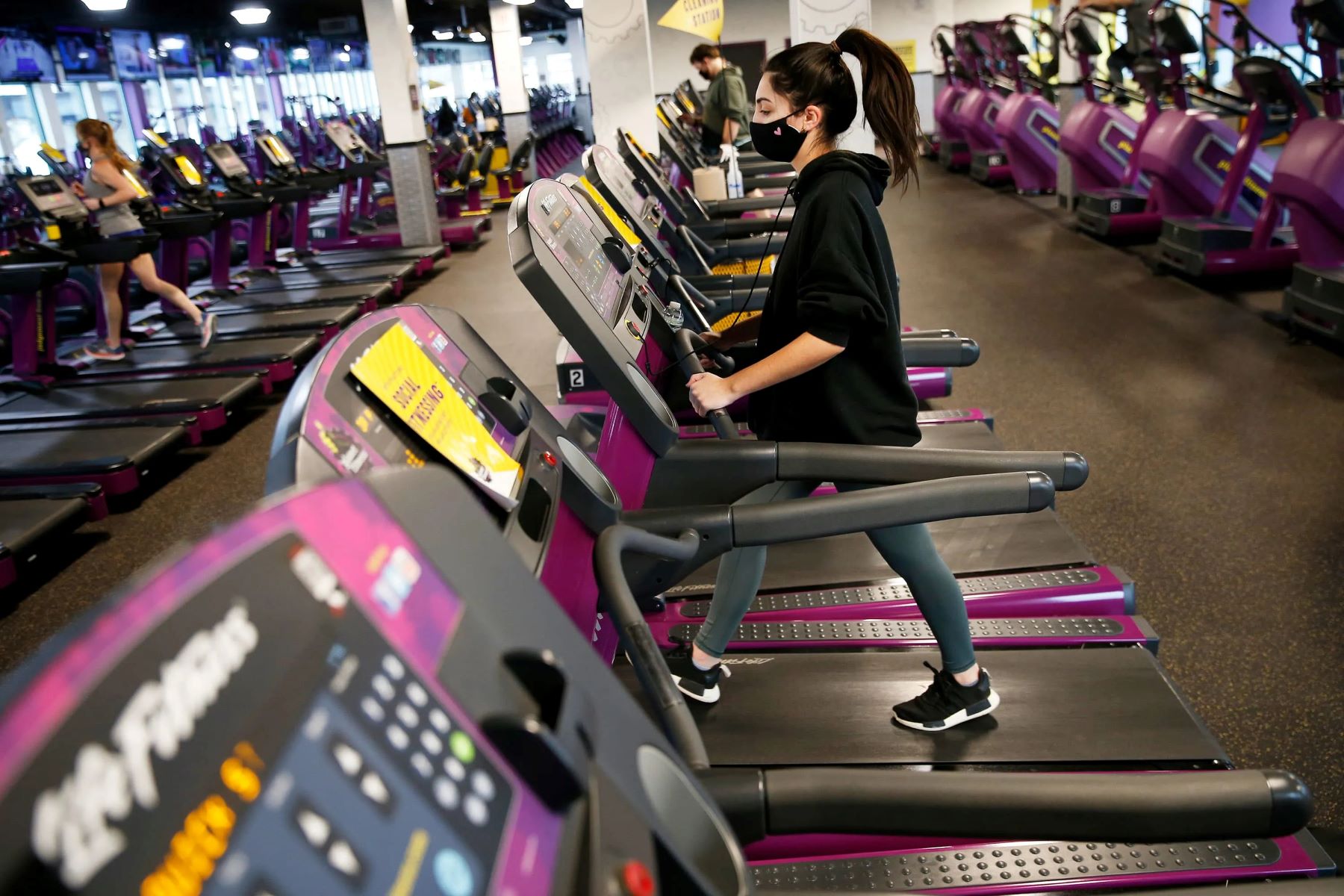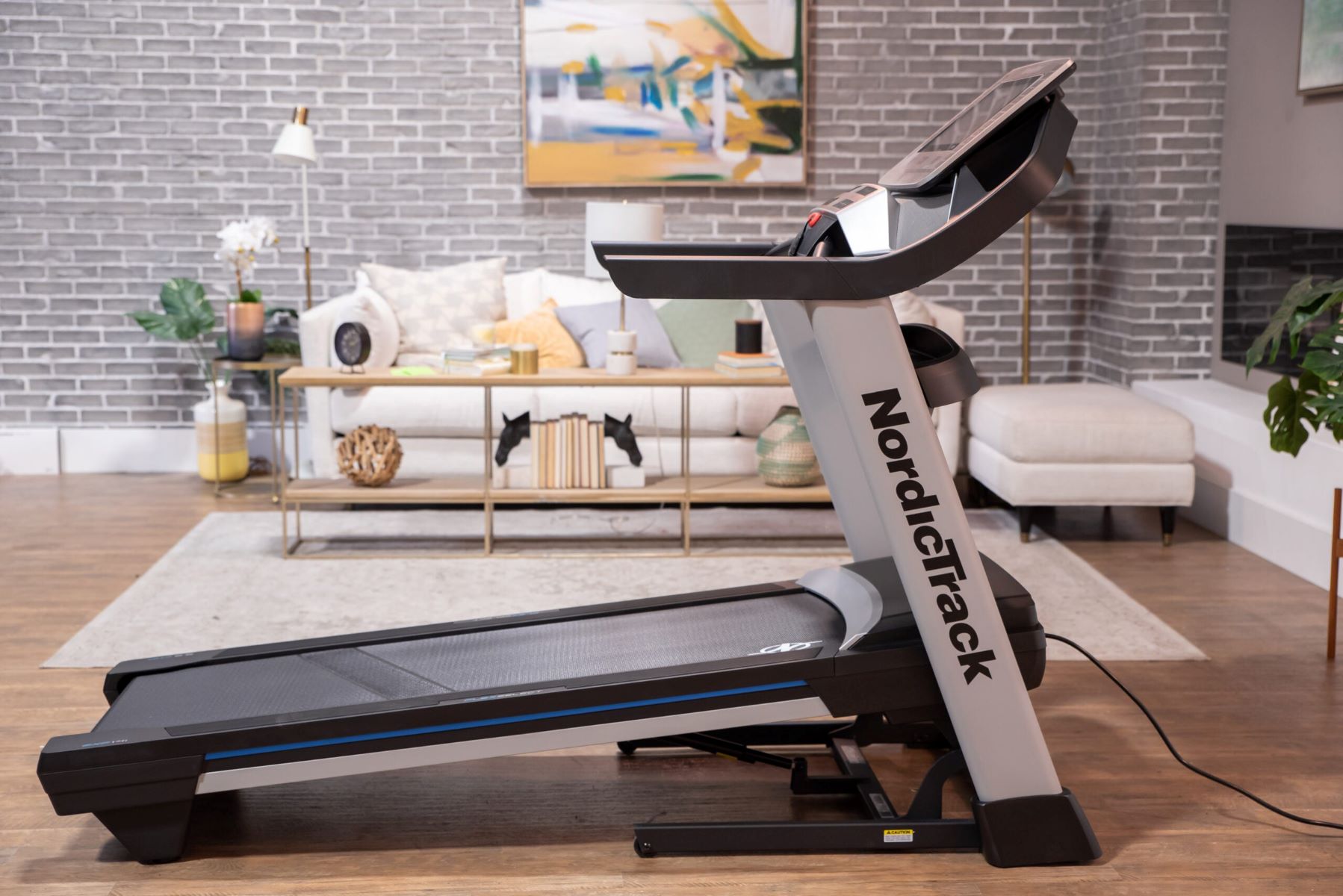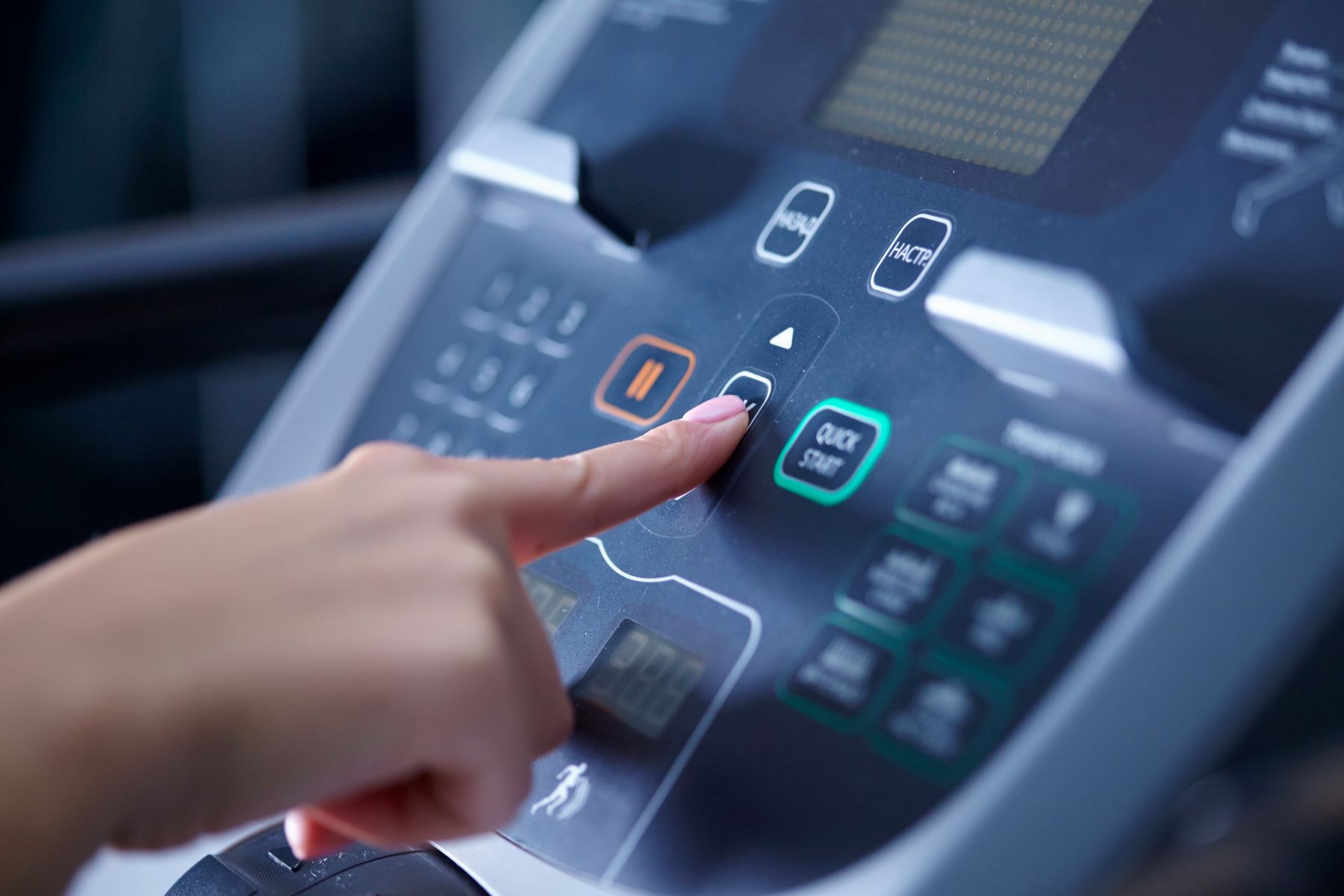

Featured
How To Stop Holding On The Treadmill
Modified: October 25, 2023
Discover how to break free from your treadmill and leave behind the stress and overwhelm. Learn how to let go and embrace a more balanced and fulfilling life. Featured tips and techniques to help you stop holding onto the treadmill.
Introduction
Welcome to the fast-paced world of fitness, where treadmills have become a staple in the pursuit of physical well-being. The allure of running on a powerful machine that simulates outdoor running without the obstacles of weather, terrain, or time constraints is undeniably enticing. Over time, however, some individuals may find themselves holding on tightly to the treadmill, both physically and mentally, to the point where it becomes more than just a tool for exercise.
Treadmill addiction, though not recognized as an official medical diagnosis, is a term used to describe a dependence on the repetitive and controlled nature of treadmill workouts. This addiction can manifest in various ways, such as excessive time spent on the treadmill, an inability to engage in other forms of exercise, or feelings of anxiety or guilt when unable to access a treadmill.
In this article, we will delve into the topic of treadmill addiction and explore ways to break free from this dependency. The aim is not to discourage the use of the treadmill, but rather to remind individuals that variety and balance are key components of a healthy lifestyle.
So if you often find yourself glued to the treadmill, unable to envision a workout without it, join us as we embark on a journey to discover freedom from treadmill addiction. Along the way, we will explore the negative impacts of holding onto the treadmill, identify its root causes, and provide strategies and tips for creating a well-rounded exercise routine.
Assessing Your Treadmill Addiction
Before embarking on any journey of change, it is important to assess the extent of your treadmill addiction. This self-reflection process will help you understand the impact it has on your life and whether it is becoming an unhealthy dependency.
Take a moment to evaluate your treadmill usage patterns and ask yourself the following questions:
- How often do you use the treadmill? Is it a daily occurrence?
- Do you feel anxious or restless if you skip a treadmill workout?
- Are you neglecting other forms of exercise or physical activities because of your reliance on the treadmill?
- Have you experienced any negative physical or emotional consequences as a result of your treadmill usage, such as injuries, burnout, or mood disturbances?
- How much time do you spend on the treadmill each session? Is it significantly longer than recommended guidelines for cardiovascular exercise?
- Are your thoughts and conversations frequently centered around the treadmill and your workouts?
Honestly answering these questions will provide insight into the level of dependence you have developed on the treadmill. This assessment is not meant to make you feel guilty or ashamed, but rather to help you recognize the need for change and take the necessary steps to regain balance in your fitness routine.
Remember, the goal is not to eliminate the treadmill entirely; it is about finding a healthy and sustainable relationship with it. Understanding the negative impacts of holding onto the treadmill will provide further motivation for breaking free from this addiction.
Understanding the Negative Impacts of Holding Onto the Treadmill
While treadmills can be a valuable tool for cardiovascular exercise, holding onto them excessively can have negative consequences on both your physical and mental well-being.
Physically, over-reliance on the treadmill can increase the risk of repetitive strain injuries, such as shin splints, plantar fasciitis, and stress fractures. These injuries occur due to the repetitive impact and limited variation of movement that the treadmill provides. Additionally, excessive treadmill usage often means neglecting other forms of exercise that provide a more well-rounded fitness routine, including strength training and flexibility exercises.
Mentally, an addiction to the treadmill can lead to a narrow focus on exercise, causing distress and guilt when unable to access a treadmill or when opting for alternative forms of exercise. This can create an unhealthy relationship with physical activity and take away the joy and freedom that should accompany it. Furthermore, excessive time spent on the treadmill can intrude upon other aspects of life, such as socializing, hobbies, and self-care, leading to feelings of imbalance and a lack of overall fulfillment.
By understanding these negative impacts, you can begin to see that holding onto the treadmill tightly may not be the healthiest approach to fitness. Recognizing the root causes of treadmill dependency will be the next step on your journey to breaking free from this addiction.
Identifying the Root Causes of Treadmill Dependency
Treadmill dependency does not occur overnight; it often stems from underlying factors that drive individuals to hold onto this particular form of exercise. Identifying the root causes of treadmill dependency is a crucial step in breaking free from this addiction.
One common root cause is the fear of change or the unknown. Treadmills provide a controlled environment where individuals can track their progress, measure their distance and time, and have a constant visual of their workout. This sense of control and familiarity can be comforting and may discourage individuals from exploring other forms of exercise that they perceive as unpredictable or less measurable.
Another contributing factor can be the societal pressure to constantly push ourselves to achieve more. In a world that celebrates productivity and success, individuals may feel compelled to squeeze in as much exercise as possible, even at the expense of their overall well-being. This constant drive to do more, coupled with the convenience and easy accessibility of treadmills, can lead to an unhealthy reliance on this singular form of exercise.
Furthermore, for some individuals, treadmill addiction may serve as an escape or coping mechanism. Using the repetitive motion of walking or running on a treadmill can provide a temporary distraction from stress, anxiety, or other emotional challenges. This can create a dependence on the treadmill as a means to regulate emotions and find solace, making it difficult to break free from this cycle.
By identifying these root causes, you can begin to address the underlying issues that contribute to your treadmill dependency. This self-awareness will pave the way for implementing strategies and tips to help you create a more balanced approach to exercise.
Breaking Free from Treadmill Addiction: Strategies and Tips
Now that we have explored the negative impacts and root causes of treadmill dependency, it’s time to discuss strategies and tips for breaking free from this addiction and creating a more balanced exercise routine.
1. Create a Balanced Exercise Routine: Instead of solely relying on the treadmill, incorporate a variety of exercises into your routine. Try outdoor running, cycling, swimming, yoga, or strength training. Embrace new activities that challenge your body in different ways and keep your workouts interesting.
2. Implement Mindfulness Techniques: Practice being fully present in your workouts. Pay attention to your body and how it feels during exercise. Focus on the sensations of movement rather than fixating on the numbers or distance. This will help shift your mindset away from solely measuring performance.
3. Seek Support from Friends and Family: Share your goals and challenges with loved ones. Engaging in physical activities with a workout buddy or joining a fitness community can provide accountability and motivation to explore new exercises beyond the treadmill.
4. Set Realistic Goals and Expectations: Accept that progress is not always linear. Set goals that are based on overall health and well-being, rather than solely on performance or numbers. Celebrate small achievements along the way and be kind to yourself when setbacks occur.
5. Overcoming Setbacks and Relapses: It’s normal to have days where the allure of the treadmill is stronger than your desire to try something new. Accept these setbacks as part of the journey and use them as a learning opportunity. Reflect on what triggered the relapse and recommit to diversifying your exercise routine.
Remember, breaking free from treadmill addiction is a personal process that requires patience and self-compassion. Focus on the joy and benefits of exploring new forms of exercise, and celebrate the freedom and diversity that comes with embracing a more balanced approach to fitness. With time and commitment, you will discover a newfound love for movement beyond the confines of the treadmill.
Creating a Balanced Exercise Routine
One key strategy for breaking free from treadmill addiction is to create a balanced exercise routine that incorporates a variety of activities. By diversifying your workouts, you can engage different muscle groups, improve overall fitness, and prevent boredom from creeping in. Here are some tips to help you create a balanced exercise routine:
1. Cardiovascular Exercise: While the treadmill may have been your go-to for cardio, consider incorporating other forms of cardiovascular exercise. Try outdoor running or cycling to enjoy the fresh air and changing scenery. Swimming is also an excellent option that provides a full-body workout while being gentle on the joints.
2. Strength Training: To build muscle and increase strength, incorporate resistance training into your routine. This can be done with free weights, resistance bands, or bodyweight exercises. Focus on different muscle groups on different days to ensure balanced development and reduce the risk of overuse injuries.
3. Flexibility and Mobility: Don’t forget to include exercises that improve flexibility and mobility. This can be in the form of stretching, yoga, or Pilates. These activities not only help prevent injuries but also promote relaxation and reduce stress.
4. Interval Training: To add variety and challenge to your workouts, incorporate interval training. This involves alternating between periods of high-intensity exercise and periods of rest or lower intensity. This can be done with different exercises such as sprints, burpees, or kettlebell swings.
5. Functional Training: Incorporate exercises that mimic movements you perform in your daily life. This can include exercises that improve balance, stability, and coordination, such as lunges, squats, and core exercises.
Remember, the goal is to find activities that you enjoy and provide a well-rounded fitness routine. Don’t be afraid to try new things, as it may lead you to discover new passions and forms of exercise that you never thought you would enjoy. By creating a balanced exercise routine, you will not only break free from treadmill addiction but also reap the benefits of overall improved fitness and well-being.
Implementing Mindfulness Techniques
Mindfulness is a powerful practice that can help free you from the grip of treadmill addiction. By incorporating mindfulness techniques into your exercise routine, you can shift your focus away from the treadmill’s numbers and measurements and instead cultivate a deeper connection with your body and the present moment. Here are some strategies to help you implement mindfulness techniques:
1. Practice Body Awareness: Before and during your workout, take a few moments to tune in to your body. Notice how it feels, any areas of tension or discomfort, and any sensations of energy or strength. This can help you connect with your body on a deeper level and shift your attention away from external measurements.
2. Focus on Breath: Pay attention to your breath as you exercise. Focus on the sensation of the breath flowing in and out of your body. This can help anchor you in the present moment and bring a sense of calm and clarity as you move through your workout.
3. Engage Your Senses: Use your senses to fully experience your workout. Notice the sights, sounds, and smells around you. Feel the ground beneath your feet or the sensation of the wind on your skin. By engaging your senses, you can bring a heightened awareness and appreciation to your exercise routine.
4. Let Go of Judgment: Release any judgments or expectations about your performance during your exercise sessions. Embrace the mindset of exploration and curiosity rather than pushing for an ideal outcome. Focus on the process and the joy of movement, rather than solely on the results.
5. Celebrate Small Achievements: Mindfulness can help you recognize and appreciate the small achievements and progress you make in your workouts. Take a moment to acknowledge and celebrate each milestone, whether it’s running an extra minute or feeling a new level of flexibility. This positive reinforcement can motivate you to continue exploring new exercises beyond the treadmill.
By implementing these mindfulness techniques, you can cultivate a deeper connection with your body, enhance your overall exercise experience, and break free from the rigid mindset associated with treadmill addiction. Embrace the present moment and discover the joy and freedom that come with mindful movement.
Seeking Support from Friends and Family
Breaking free from treadmill addiction can be a challenging journey, but you don’t have to face it alone. Seeking support from friends and family can provide the encouragement, accountability, and motivation you need to explore new forms of exercise and create a more balanced routine. Here’s how you can enlist the support of your loved ones:
1. Share Your Goals: Communicate your desire to break free from treadmill addiction and explain why it’s important to you. By articulating your goals, you create a sense of accountability and help others understand how they can support you on this journey.
2. Arrange Workout Partners: Find a workout buddy or encourage a family member to join you in your exercise routine. Having someone by your side can make the transition away from the treadmill feel less daunting and more enjoyable. They can also introduce you to their favorite activities and provide a fresh perspective on fitness.
3. Plan Active Outings: Instead of meeting up for coffee or meals, suggest engaging in physical activities together. Go for a hike, take a dance class, or try a new sport as a group. This not only provides an opportunity for quality time but also broadens your exercise options and helps to shift the focus away from the treadmill.
4. Encourage Accountability: Ask a trusted friend or family member to hold you accountable to your exercise goals. Share your progress, challenges, and successes with them regularly. Their support and reminders can help you stay on track and motivate you to continue exploring new forms of exercise.
5. Create a Supportive Environment: Let your friends and family know about your desire to diversify your exercise routine and reduce treadmill dependency. Encourage them to suggest alternative activities and invite you to participate in non-treadmill related workouts or events. By creating a supportive environment, you open yourself up to new opportunities and experiences.
Remember, seeking support from friends and family does not mean they have to completely understand or experience treadmill addiction themselves. Their empathy, encouragement, and involvement can make a difference in your journey towards breaking free from treadmill dependency. Embrace their support, embrace new adventures, and embrace the sense of togetherness that comes from this shared commitment to your well-being.
Setting Realistic Goals and Expectations
When breaking free from treadmill addiction, it’s essential to set realistic goals and expectations for yourself. By doing so, you create a framework that allows for progress and growth without placing unnecessary pressure on yourself. Here are some tips to help you set realistic goals and expectations:
1. Assess Your Current Fitness Level: Take an honest look at your current fitness level and consider any limitations or challenges you may have. This will help you set goals that are both achievable and tailored to your individual needs.
2. Focus on Overall Health and Well-being: Rather than solely focusing on performance or numbers, shift your perspective towards overall health and well-being. Set goals that encompass various aspects of wellness, such as improving cardiovascular health, building strength, increasing flexibility, or reducing stress levels.
3. Break Goals into Smaller Milestones: Break your larger goals into smaller, achievable milestones. This not only provides a sense of accomplishment but also helps you stay motivated and maintain momentum throughout your journey.
4. Be Flexible and Adaptable: Understand that progress is not always linear and that setbacks and challenges may arise. Embrace a mindset of flexibility and adaptability, allowing yourself to modify your goals or adjust your approach as needed.
5. Celebrate Non-Scale Victories: Shift your focus away from the scale and instead celebrate non-scale victories. These can include improved energy levels, increased endurance, better sleep, or enhanced mood. Recognize and appreciate the positive changes you experience beyond just physical measurements.
6. Set Realistic Timeframes: Give yourself enough time to reach your goals. Rome wasn’t built in a day, and sustainable progress takes time. Avoid setting unrealistic deadlines that may lead to disappointment or burnout.
7. Embrace the Journey: Remember that the goal is not only to achieve the desired outcome but also to enjoy the process. Embrace the journey, find joy in trying new activities, and appreciate the personal growth and self-discovery that come with breaking free from treadmill addiction.
By setting realistic goals and expectations, you create a positive and empowering framework for your journey away from treadmill dependency. Celebrate your progress, embrace the small victories, and trust that with consistency and determination, you will achieve a more balanced and fulfilling exercise routine.
Overcoming Setbacks and Relapses
On the path to breaking free from treadmill addiction, setbacks and relapses are not uncommon. It’s important to remember that change is not always linear, and it’s natural to face challenges along the way. The key is to develop strategies and a resilient mindset to overcome setbacks and relapses. Here are some tips to help you navigate through these moments:
1. Show Self-Compassion: Be gentle with yourself and practice self-compassion when facing setbacks. Instead of dwelling on feelings of guilt or frustration, acknowledge that setbacks are a part of the journey. Treat yourself with kindness and understand that it’s a learning experience.
2. Reflect on Triggers and Patterns: Take the time to reflect on what triggered the setback or relapse. Identify any patterns or habits that may have led to the deviation from your goals. By understanding these triggers, you can develop strategies to prevent similar situations in the future.
3. Recommit to Your Goals: Remind yourself of the reasons why you wanted to break free from treadmill addiction in the first place. Reflect on the benefits and the progress you have made so far. Use this motivation as a catalyst to recommit to your goals and get back on track.
4. Modify Your Approach: If you find yourself consistently facing setbacks or relapses, it may be time to reevaluate your approach. Consider modifying your goals, exploring new activities, or seeking additional support. Sometimes a fresh perspective or change in strategy can make a significant difference.
5. Lean on Support System: Reach out to your support system for guidance and encouragement during setbacks. This can be friends, family, or even a professional fitness coach or therapist. Share your challenges and ask for their advice on how to overcome the obstacles you are facing.
6. Practice Resilience: Embrace resilience by viewing setbacks as opportunities for growth and learning. Use them as stepping stones rather than stumbling blocks. Strengthen your resilience muscle by maintaining a positive mindset, staying focused on your long-term goals, and persevering through obstacles.
Remember, setbacks and relapses are not signs of failure. They are natural parts of the journey towards breaking free from treadmiI addiction. Each setback can provide valuable insights and lessons that will ultimately contribute to your growth and success. Stay resilient, stay committed, and keep moving forward on your path to a more balanced and fulfilling exercise routine.
Conclusion
Breaking free from treadmill addiction is a transformative journey that requires self-reflection, resilience, and a commitment to creating a more balanced exercise routine. By understanding the negative impacts of holding onto the treadmill, identifying the root causes of dependency, and implementing strategies and tips, you can regain control over your fitness habits and rediscover the joy of movement beyond the confines of a treadmill.
Remember, breaking free from treadmill addiction is not about completely eliminating the treadmill from your life. It’s about finding a healthy and sustainable relationship with exercise that allows for variety, enjoyment, and overall well-being. Incorporate different forms of cardiovascular exercise, embrace strength training and flexibility, and practice mindfulness to fully experience your workouts.
Along the way, seek support from friends and family, set realistic goals and expectations, and embrace the journey of exploration and self-discovery. Overcoming setbacks and relapses is a natural part of the process, so be kind to yourself, reflect on triggers and patterns, and adjust your approach as needed.
Breaking free from treadmill addiction opens up a world of opportunities for personal growth and a more holistic approach to fitness. Embrace the freedom, diversity, and sense of adventure that comes with trying new forms of exercise. By adopting a balanced exercise routine and nurturing a positive mindset, you will find yourself on a path to improved physical health, mental well-being, and a more fulfilling and sustainable relationship with exercise.









